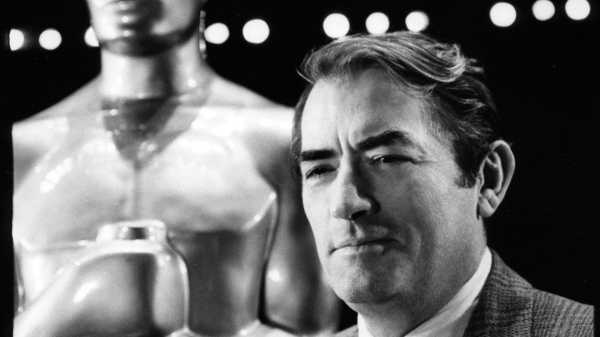
On April 14, 1969, Gregory Peck strode across a deserted hall of Los Angeles’s Dorothy Chandler Pavilion like a weary cowboy crossing a prairie. He had become the president of the Academy of Motion Picture Arts and Sciences two years earlier, and his job was to introduce the Forty-first Academy Awards. On camera, Peck descended a mirrored staircase in the atrium, looked around, with his thick eyebrows furrowed, and announced in his deep voice, “It’s kind of lonesome out here. The audience is already on the inside.”
The most nominated films that year were the splashy studio musicals “Oliver!” and “Funny Girl,” whose twenty-six-year-old star, Barbra Streisand, showed up to the ceremony in a see-through pants suit. In an effort to make the Oscar broadcast less lugubrious, Peck had hired the stage director Gower Champion. In place of Bob Hope, hosting duties were shared by “Oscar’s best friends,” among them Ingrid Bergman, Sidney Poitier, Burt Lancaster, and, for the youth market, Jane Fonda, her short hair waved for her role in “They Shoot Horses, Don’t They?”
When Bergman opened the Best Actress envelope, she found a shocker: Streisand had tied with Katharine Hepburn, for “The Lion in Winter.” Because Hepburn was absent, Streisand had no chance of being upstaged. She cooed to her statuette, “Hello, gorgeous!” “Oliver!” won five awards. Several months earlier, the M.P.A.A. had instituted a new ratings system, replacing the old Production Code after three and a half decades. “Oliver!” was rated G, designating it as the kind of wholesome studio entertainment that could be enjoyed by “general audiences,” whoever those were. But a closer look revealed another Hollywood—and a more unconventional kind of movie—clawing at the gates. “Rosemary’s Baby” was nominated only for its screenplay, by Roman Polanski, and for the performance of Ruth Gordon, who won Best Supporting Actress. Stanley Kubrick’s “2001: A Space Odyssey” had managed four nominations, Best Picture not among them, and won for special effects—the only Oscar that Kubrick would ever receive. And sitting next to Streisand was her estranged husband, the little-known Elliott Gould, wearing the droopy mustache he had grown for Robert Altman’s “M*A*S*H.”
After the awards, congratulations on a smashing show poured into Peck’s Academy mailbox (along with a few complaints that it was “too far out”). “At a time when the morals within movies are being pushed to the outer edges of chaos,” Vincent Canby wrote in the Times, awards for films such as “Oliver!” “reassure everyone in the industry that all is well, that Hollywood really isn’t some giant bordello that’s about to be raided.”
He spoke too soon. A year later, Gould would be nominated for a movie about wife-swapping, Fonda would hold up a fist on the red carpet, hippie garb would turn the Oscar stage psychedelic, and the winner of the Best Picture award would be rated X.
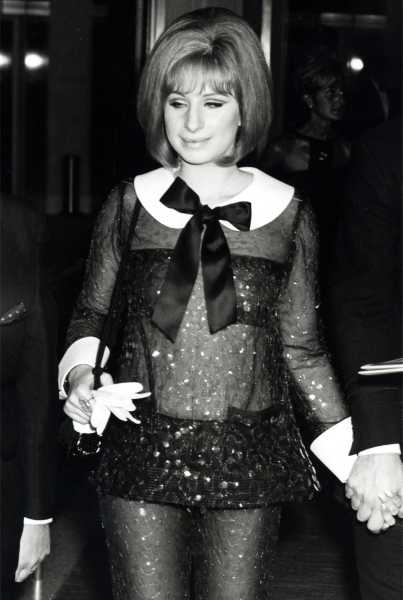
Barbra Streisand’s pants suit caused a stir at the Forty-first Academy Awards.Photograph by Ron Galella / Getty

Photograph from Bettmann / Getty
If Hollywood had arrived late to the sixties, the Academy arrived even later. “The Graduate” and “Bonnie and Clyde” made the Best Picture cut in 1968, but both lost to the Sidney Poitier drama “In the Heat of the Night,” one of Hollywood’s belated acknowledgments of the civil-rights movement. The next year, the thirty-six-year-old Paramount executive Peter Bart watched “Rosemary’s Baby” lose the adapted-screenplay award to “The Lion in Winter.” “I was by far the youngest person in the audience,” he said. On the eve of the forty-first awards, the Times mocked the Academy for its byzantine membership procedure, “a trying ritual that rivals finding a cheap apartment in Manhattan,” noting that its three-thousand-odd voting body was “heavily weighted with older people, many of whom are no longer very active in the film business.” The nominations proved the point. As Variety observed, the “Over-50 demographic age characteristics of Academy members was brought sharply home with lack of a best picture nomination for ‘2001,’ this year’s youth fave.”
If anyone could lead the Academy out of obsolescence, reincarnating it like “2001” ’s Star Child, it would have to be someone who understood what the sex-drugs-and-rock-and-roll generation was looking for. Yet the job had fallen to a square-jawed fifty-three-year-old whom most of America thought of as Dad: Gregory Peck.
Peck had arrived in Hollywood in 1943, a former rower with the clean-cut handsomeness to match. He could be stalwart to the point of being stiff, but, with the war depleting Hollywood of leading men, his robustness had appeal. In the nineteen-forties, he was nominated for Best Actor three years in a row, for “The Keys of the Kingdom,” “The Yearling,” and “Gentleman’s Agreement,” which won Best Picture. In the last, he played a Gentile journalist who poses as Jewish to expose antisemitism, a role that chimed with his offscreen liberalism. In 1950, he was nominated a fourth time, for the war drama “Twelve O’Clock High.” Onscreen and off, he exemplified the reasonable man who takes a principled stand. But it wasn’t until he was forty-six that he found the role that burnished his legend: Atticus Finch, in “To Kill a Mockingbird.” From behind round spectacles, Atticus embodied the citizen hero, the gentle father, the fair-minded dissenter. “In that film,” Harper Lee said, “the man and the part met.”
Lee gave Peck a gold watch and chain that had belonged to her late father, the model for Atticus, and he carried it with him to the Academy Awards on April 8, 1963, where he finally won Best Actor. The moral glow of Atticus Finch propelled Peck to a new role as civic figurehead. The next year, he was elected to the Academy’s board of governors. Unlike Ronald Reagan, Peck declined to run for political office, instead becoming Hollywood’s unofficial mayor—Reagan’s liberal shadow. In June, 1967, he was elected Academy president.
Peck’s role as Hollywood’s liberal ambassador came at a cost to his acting career. In the first month of 1969, Lyndon Johnson awarded him the Presidential Medal of Freedom, calling him a “humanitarian to whom Americans are deeply indebted.” Three days later, Vincent Canby panned Peck’s new film, “The Stalking Moon,” writing, “Peck is so grave and earnest it seems he must be thinking about his duties on the board of the American Film Institute, rather than on survival.” Children who were eleven in 1962, when they first saw Peck as Atticus Finch, were now burning their draft cards. They didn’t want a father figure; they wanted rebellion.
Peck wasn’t blind to the sea change. “Film turns young people on like nothing else,” he said in 1968, predicting an “American New Wave,” brought on by such directors as Mike Nichols and Francis Ford Coppola. Where Peck belonged in that future was uncertain. Splitting his time between a Brentwood mansion and a house in the South of France, he preferred Trollope to Philip Roth.
Peck entered 1969 pulled in different directions. His son Stephen had received his draft card and joined the Marine Corps. “He was very patriotic, my dad, even though he was against the war,” Stephen recalled. “He stoically said, ‘Well, you gotta do what you gotta do.’ And off I went.” In the spring of 1969, Stephen shipped out to Da Nang, where his father sent him boxes of Dickens and Brontë.
At the Academy, Peck was putting out fires. He had received “some bruising comments” about the Oscar telecast, he wrote to a friend, “especially about Barbra Streisand’s derriere.” The efforts to jazz up the broadcast had failed to halt a ratings slump. As in recent years, when the #OscarsSoWhite scandal cast a harsh light on the Academy’s sclerosis, the swiftly changing times were rendering the Oscars irrelevant. Peck had to do something bold to bring the Academy up to date. He had already commissioned a study of the membership rolls, with the idea of demoting administrators and P.R. people to non-voting status. Then he got a nudge from an unlikely source: the twenty-two-year-old starlet Candice Bergen.
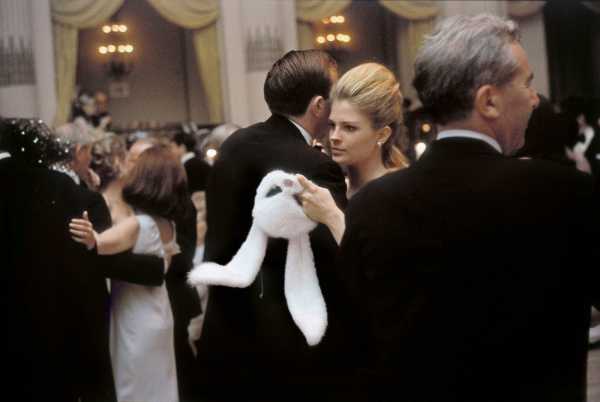
Candice Bergen at Truman Capote’s 1966 Black and White Ball at the Plaza, with a mink bunny mask by Halston.Photograph by Elliott Erwitt / Magnum
In 1967, Bergen had returned to Los Angeles after nearly two years of jet-setting, making films in France and Greece, going along on pheasant shoots, and liaising with an Austrian count. She had the statuesque beauty of a Nordic deity, with silky blond hair and a tapered nose that ended in elegantly flared nostrils. Her wardrobe was stocked with Dior and Hermès, and her style fell somewhere between Holly Golightly and Princess Grace.
But the L.A. she came back to was unrecognizable. “Men in page-boy haircuts preened, ruffled and jeweled, lurching in high-heeled buckled boots, fashionably foppish,” she wrote in her memoir “Knock Wood,” “while women’s heads were shorn: they were more eyelashes than hair, peering out from under the spiky black thatch shading each eye and trying to look like Twiggy, their patron saint.” In New York, Bergen had attended Truman Capote’s Black and White Ball at the Plaza, wearing a mink bunny mask loaned to her by Halston. As she swanned among the crowd, a Women’s Wear Daily reporter asked her: Wasn’t it inappropriate to be hobnobbing at a ball while war was raging in Vietnam?
“Oh, honestly,” Bergen sniffed in her bunny ears.
Back home in Los Angeles, she prepared for her twenty-first birthday, sending out invitations to “mourn the passing of my youth” to guests who included Rosalind Russell and Cary Grant. This was the world she knew: the world of her father, the ventriloquist Edgar Bergen, whose fame had come courtesy of his top-hatted wooden alter ego, Charlie McCarthy. When Candice was born, in 1946, the press called her “Charlie’s sister.” In her father’s office, she would gaze at his special Oscar, awarded in 1938—made of wood, with a movable mouth.
Now that Candy had broken through as a Revlon model and a star of “The Group,” the film Sidney Lumet made from the Mary McCarthy novel, her fame eclipsed Edgar’s—the “father of Charlie McCarthy” was now the “father of Candice Bergen.” The sixties had rendered him prehistoric; now Edgar and Charlie were reduced to performing at county fairs. But it wasn’t as if Candy were especially up with the times. “Evidently the Sweet Bird of Youth had passed me by like a Boeing,” she recalled, “and I found myself, at twenty-one, peering at the generation gap like a tourist—from the far side.”
One night, Bergen went to a party in Benedict Canyon in her Dior lounge pajamas. Inside the house, she smelled burning sandalwood. Janis Joplin’s voice blasted from the sound system. The women wore moccasins; the guys were shaggy-haired and festooned in beads and bells. “People were sitting and passing a joint and listening to the music,” she told me, “and I’m there with my crocodile bag and my little kitten heels. It was just, like, where am I?”
Bewildered, Bergen found the host, Terry Melcher. Doris Day’s son, Melcher had been Bergen’s first love when she was sixteen and he was a college dropout in Italian loafers. Five years later, Melcher wore jeans and an Indian shirt, his hair down to his shoulders. He worked at Columbia Records, which placed him at the center of the California rock scene: he produced the Byrds’ “Mr. Tambourine Man” and played on the Beach Boys’ “Pet Sounds.” “You seem so old,” Melcher told Bergen. “Don’t you miss being a kid?”
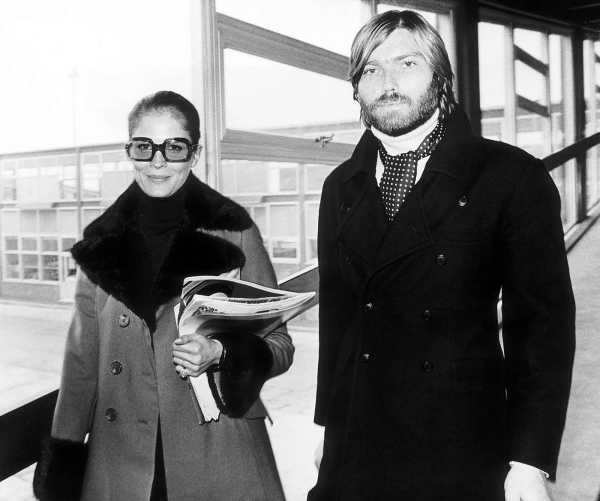
Candice Bergen and Terry Melcher, in 1968.Photograph by Murphy George / Daily Herald / Mirrorpix / Getty
The two became a couple again. They took motorcycle rides through the mountains, and she tried to fit in with his hippie circle, which included Brian Wilson and John and Michelle Phillips, from the Mamas and the Papas. “I was beyond straight,” she recalled. “No number of robes and beads, no amount of dope was going to change that, though God knows I tried.” She moved into Melcher’s house in Benedict Canyon, where the party had been: 10050 Cielo Drive.
Among their dinner guests was the self-styled shaman Rolling Thunder, who once asked Bergen if she had any fresh meat for a sacrifice; she gave him chicken legs and ground sirloin from the freezer, and he took them up a mountain and burned them. Bergen was finding her side of the generation gap. By 1968, she was covering the Oregon primaries for Cosmopolitan and expounding to the Los Angeles Times on the Maharishi and “cosmic consciousness.” Her Republican father disapproved of Melcher, whose radical politics were rubbing off on his daughter, with her lectures on materialism and vegetarianism. “One week it’s ducks, the next it’s Indians!” her exasperated father would exclaim.
One day, Melcher came home talking about a commune he’d visited at an old movie ranch, where young women doted on their Christlike leader, singing in the nude. Melcher halfheartedly asked if she wanted to meet them, but she had no interest in Charlie Manson.
In January, 1969, Melcher abruptly told Bergen that they were moving to his mother’s beach house in Malibu. Manson had been dogging Melcher for a record contract, and the producer asked friends not to tell Manson his new address. Soon after they left the Cielo Drive house, Roman Polanski and Sharon Tate moved in.
Terry’s stepfather, Martin Melcher, had died nine months earlier; his survivors were shocked to learn that he had embezzled millions from Doris Day, saddling Terry with mountains of financial briefs. Terry leaned on sleeping pills and liquor, and Bergen watched the life drain out of him. Left alone to walk her St. Bernard on the beach, she felt adrift. In April, she watched the Academy Awards and saw that something was missing: people her age. “The Academy needed new blood,” she told me. “It seemed to need blood, period. It skewed way too old.”
She was uniquely qualified to act as a bridge—bred by the Old Hollywood but versed in the New. She had crossed paths with Gregory Peck growing up but didn’t know him well. Nine days after “Oliver!” won Best Picture, Bergen sat down with her stationery pad and wrote in blue cursive:
Dear Mr. Peck,
Not being an Academy member, I am most certainly out of place in writing you. I am a film lover and you seem to be the most receptive and constructive of all Academy Presidents.
Among the rising questions provoked by antiquated Academy rules is that of membership. Many or most members are anachronisms clogging the works of an incredibly facile mechanism called motion pictures.
I would be very grateful if I could help in any way to recruit newer, younger members. Perhaps one way is compiling a list of those whose creativity and energy the Academy never before solicited. And by mailing memberships to those people voted upon jointly by the Academy or its Board of Directors. Application procedures are somewhat lengthy & discouraging.
In this way the Academy might be more of a vital, social organism improving higher, more honest standards and encouraging new talent.
I know you are concerned with these very same things. I don’t mean to be rude, I am simply offering my help and interest if it is needed. (Attested by the fact that I used 3 pieces of good stationery…)
Congratulations to you and Mr. Champion on such an exciting show. You do us proud.
Sincerely,
Candice Bergen
Two days later came a reply on Academy letterhead, along with the closely guarded membership list. “Why don’t you go over it, and then make out a list of young people who should be in the Academy,” Peck suggested. “I agree with you that the Academy must break down resistance to new ideas, and indifference to the kinds of films which have meaning today to younger audiences. Since we can’t put older members, who in their time made important contributions, out on the icebergs to die, we must do our best to balance things by encouraging all of the qualified younger people to join and exert their influence.”
Empowered by her latest crusade, Bergen got to work. Among her recruits was Dennis Hopper, who was about to release a film that would tilt Hollywood on its axis: “Easy Rider.” “He was sort of a brilliant lunatic,” Bergen recalled. “Totally unedited and uncensored, just this force of nature, without any impulse control.” The movie opened at Manhattan’s Beekman Theatre on July 14th, as the summer of ’69 was under way, and made back its budget in a week. Teens lined up barefoot and smoked so much pot in the men’s room that the staff had to remove the stall doors. Life credited Hopper with creating “the style of a New Hollywood in which producers wear love beads instead of diamond stickpins.”
Later that month, as the world stopped to watch Neil Armstrong walk on the moon, Bergen was in Eugene, Oregon, shooting “Getting Straight,” a comedy about a campus protest. It starred Elliott Gould, as a sardonic teaching assistant; Bergen, as his coed girlfriend; and the twenty-seven-year-old Harrison Ford, as a long-haired art student. The movie was the sort of studio concoction that tried too hard to chase the youth vote, up to its ludicrous last shot of Gould and Bergen getting it on mid-riot. As the cast gathered in a hotel room reeking of pot smoke, Bergen rolled her eyes. “Candice said, ‘While you were all downstairs watching the moon landing, I was upstairs watching ‘The Prisoner of Zenda,’ ” Gould told me.
Soon after, Bergen returned to Malibu and to Terry Melcher, who had got hooked on Placidyl. Weird things were happening. One morning, they woke to find that the telescope on the veranda was missing. Days later, a friend passed on the message that Manson was looking for Melcher—and if he happened to be missing a telescope, that’s because Manson had borrowed it. A week later, Hollywood awoke to absolute horror: Sharon Tate and four others had been murdered in Terry and Candy’s old house on Cielo Drive. Bergen panicked. “It could have been me!” she wailed to Melcher. “I could have been killed!”
“We could have been killed,” he corrected her. Bergen moved out.
Rumors circulated that the unidentified killers had a movie-star hit list. Los Angeles was upended with fear and speculation. Was it the Black Panthers? A celebrity stalker? Who was next? Throughout Hollywood, people armored their mansions with automatic gates and guard dogs. Gregory Peck hired a night guard in Brentwood.
Peck was summering in France, conducting Academy business through the post. The most pressing matter was his plan to move noncreative members to “associate” status, without Oscar-voting privileges.
He was also brooding about his son Stephen, in Vietnam. “He spent a year in almost terror of the Western Union,” Peck’s younger son Carey, who, at the time, was starting at Georgetown’s School of Foreign Service, recalled. During his first semester, Carey was arrested twice for civil disobedience. His father’s agent chided him for exposing Peck to potential scandal. But Peck told his son, “These days, if you don’t have an arrest record, you’re not young and alive and standing on the right side of things.”
Bergen was in Mexico making a new film, “Soldier Blue,” when Terry Melcher told her on the phone that Manson had been arrested in connection with the Tate killings. (Manson later invited Dennis Hopper to see him in prison, hoping that he would play him in a movie.) She received a subpoena but arranged to testify in private. She sat in the back of the courtroom when Tex Watson, one of the accused, was brought out. She was asked if she recognized him, but she didn’t. Hippies all looked alike to her.
Bergen had bought her own place, called the Aviary, on the old John Barrymore estate. Having once housed exotic birds and, later, Katharine Hepburn, it was an impractical but romantic dwelling: a Mediterranean tower amid cypress trees, with stained-glass windows and moldy murals that reminded Bergen of the “Arabian Nights” tales. She had a horse named Herschel and spent her days practicing photography and contemplating ecological causes. But, after the Manson murders, everything seemed darker. “I remember John Phillips came over to visit once, with Quincy Jones, and left me a gun,” she told me. “I said, ‘Why are you giving this to me?’ ”
Bergen had kept up her end of the bargain with Peck, cajoling Hopper and other friends to join the Academy. Her father and Peck had co-sponsored her own membership, and she sponsored her flock in turn. In the fall of 1969, she wrote a letter to the Academy president, telling him that she’d filled out the forms he’d sent for nine of her friends. “All of them are people who are a vital and creative part of our industry (perhaps the only vital and creative part of the industry).” But each of them needed a co-sponsor: would he oblige?
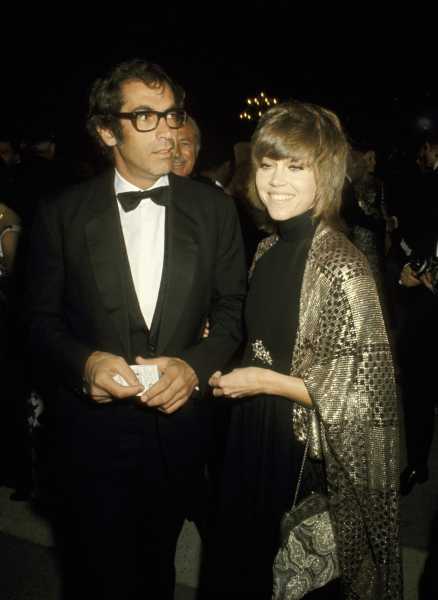
Roger Vadim and Jane Fonda at the Forty-second Academy Awards.Photograph by Ron Galella / Getty
By then, Peck was in Tennessee shooting “I Walk the Line,” in which he was miscast as a married small-town sheriff who has an affair with a mysterious young hillbilly. From the Holiday Inn in Cookeville, he kept up on Academy affairs. ABC was “adamant” that Bob Hope be invited back to host the Oscars, but Peck was keen to draw in the New Hollywood set. The Academy’s executive director, Margaret Herrick, wrote to him about the sponsorship cards he’d sent in, many with Bergen’s help. “Warren Beatty and Katharine Ross have been members since 1968; Julie Christie was invited in 1967 and never responded; Dustin Hoffman was invited in 1968 and never responded, but Jack Nicholson, [Elliott] Gould, Peter Fonda, Dennis Hopper and Robert [Forster, the star of “Medium Cool”] should definitely be invited before the end of this year as they are certainly more than eligible.”
The indifference of such young talents as Julie Christie and Dustin Hoffman was bad news. Peck sent them personal appeals, writing, “I urge you to accept membership in the Academy when it is offered to you, as it will be in December. It is not your dues we are interested in. We do want your point of view reflected in the annual voting for awards.” He assured them that even a single vote could change the outcome: “Witness last year’s tie vote between Katharine Hepburn & Barbra Streisand.”
The drawbridge was lowering, and fast. Peck had something even bolder in mind. Over the winter, the Board of Governors finalized a radical new plan: anyone who had not been active in the movie industry for seven years would be made an “associate” member, without an Oscar vote—in other words, put “out on the icebergs to die.” Secret lists were drawn up; lawyers were consulted. The board agreed that the purge would be kept under wraps until after the Forty-second Academy Awards.
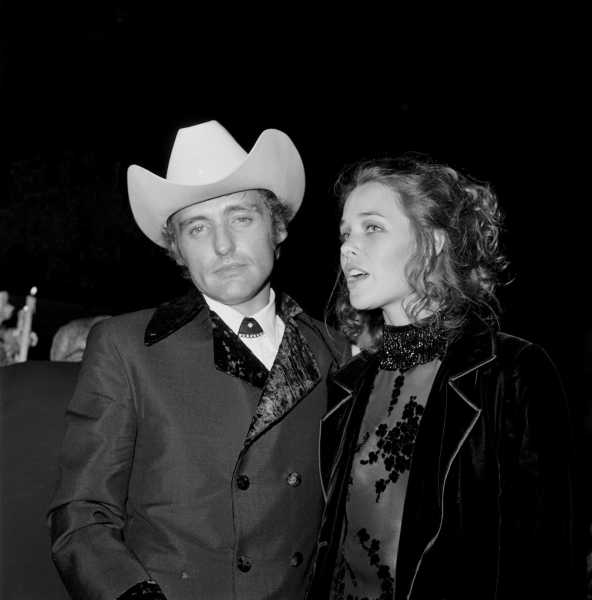
Dennis Hopper and Michelle Phillips, of the Mamas and the Papas, at the Forty-second Academy Awards.Photograph from Michael Ochs Archives / Getty
Dennis Hopper forgot all about the Academy Awards ceremony, until someone reminded him to show up. “Easy Rider” had been nominated for its screenplay and for its supporting actor Jack Nicholson’s performance. On April 7, 1970, Hopper arrived in a velvet tux, cowboy boots, and a Stetson. Jane Fonda, wearing her “Klute” shag, held up a fist to the roaring fans and yelled, “Right on!” Her political opposite, John Wayne, also received a swell of cheers, although one person held up a sign reading, “JOHN WAYNE IS A RACIST.” Down the street, some fifty people demonstrated against Hollywood’s stereotypical depiction of Latinos in movies like “Butch Cassidy and the Sundance Kid,” with placards reading, “Power to the Chicanos!”
In the Best Picture race, “Butch Cassidy” was up against the musical extravaganza “Hello, Dolly!” and the period melodrama “Anne of the Thousand Days.” Another nominee was John Schlesinger’s “Midnight Cowboy,” starring Jon Voight as a Texan who goes to Manhattan to be a gigolo but winds up servicing men, while befriending a consumptive con man called Ratso Rizzo, played by Dustin Hoffman. United Artists had actually pushed the ratings board to give it an X rating, which would equal cachet with the hippie crowd.
When the curtains opened, Gregory Peck walked onstage and struck a philosophical tone. “Most of us these days are asking ourselves and each other these questions: What is the meaning of the new freedom of the screen? Is it something to be feared? Should the screen be censored?” Bob Hope, who had been invited to give his usual monologue, said a hammier version of the same. “It’s such a novelty seeing actors and actresses with their clothes on,” he joked, after coming onstage wearing a “True Grit” eye patch. Summing up the new epoch of sex, drugs, and violence, Hope said, “This is not an Academy Awards. It’s a freak-out, ladies and gentlemen.”
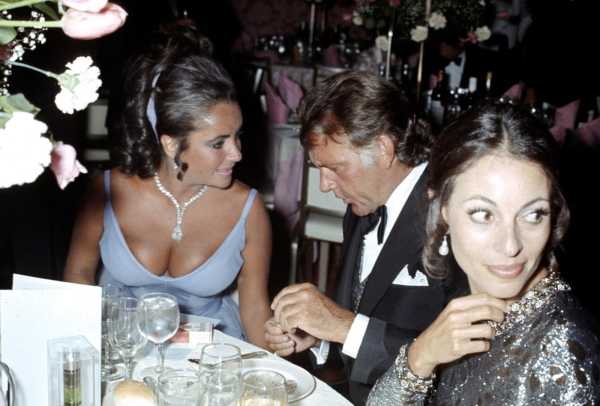
Elizabeth Taylor and Richard Burton; her diamond played a role at her Oscars after-party.Photograph by Ron Galella / Getty
So it was. The audience was the generation gap made visible: Vincente Minnelli, Frank Sinatra, and Cary Grant on one side, Jane Fonda, Jack Nicholson, and Dennis Hopper on the other. “These X-rated movies are really something,” Hope continued. “One theatre manager told me he’s been popping corn for six months and still hasn’t plugged the machine in.” The audience laughed, with some groans. “You could feel there was a kind of buzz when Bob Hope would host anything, because he was the conservative,” Candice Bergen told me. “And so it was very much us against them.”
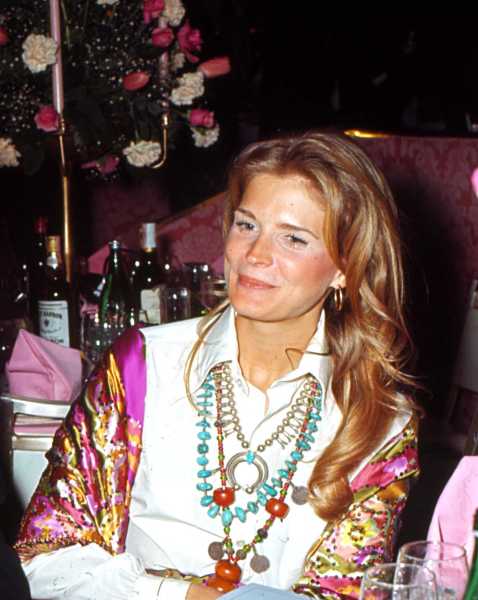
Candice Bergen in the outfit that made her mother mad at the Forty-second Academy Awards.Photograph from Shutterstock
Bergen, one of the recurring presenters (“Oscar’s best friends”) wore a sequinned purple shawl with gold fringe, loaned by her friend Arnold Scaasi. She and Gould handed out the first award, Best Sound, which was won by “Hello, Dolly!” Gould, nominated for “Bob & Carol & Ted & Alice,” was surprised to find himself seated near John Wayne and his wife. When Wayne was called backstage, he turned to Gould and said, “When I go up there, you look after her.” It was unclear whether he knew that he was talking to the guy from the wife-swapping movie.
Presenting Best Cinematography to “Butch Cassidy,” Wayne marked his turf in the culture war, grumbling, “I’m John Wayne, an American movie actor. I work with my clothes on.” Like Hope, Wayne was pro-Vietnam and was despised by the hipper members of the audience.
Each award was a shot across the battle line between the two Hollywoods. The writers of “Easy Rider” and “Bob & Carol & Ted & Alice” lost to William Goldman, for “Butch Cassidy.” Streisand, in a pink pillbox hat, came out to present Best Actor. Both “Midnight Cowboy” actors lost to John Wayne.
Midway through, Hope came out with Fred Astaire. “You’ve never danced in the Academy show, huh?” Hope said. The orchestra played a funky riff, and Astaire, who was born in 1899, began jerking his seventy-year-old frame to an unmistakably seventies sound. He swayed, he twirled—an old man matching his rhythm to an unfamiliar beat. Then the conductor swung into a big-band tune, and Astaire broke into an exuberant tap routine, dancing away the decades, lighter than air. It was a dance to ward off mortality, to reawaken the schmaltzy Hollywood that was falling into the sea. Later in the night, Jon Voight was crossing backstage when he saw Astaire coming toward him.
“We reached each other in the middle of this thing, me six foot two or three and Fred, slight of figure, shorter,” Voight later recalled. “And he looked up and said, ‘Oh, Jon! Hi. Let me stand aside.’ I said, ‘No, no, please—let me stand aside for you.’ . . . That was the meeting of the two generations in the appropriate way, with tremendous regard for each other.”
Finally, Elizabeth Taylor came out to present Best Picture. The winner was “Midnight Cowboy.”
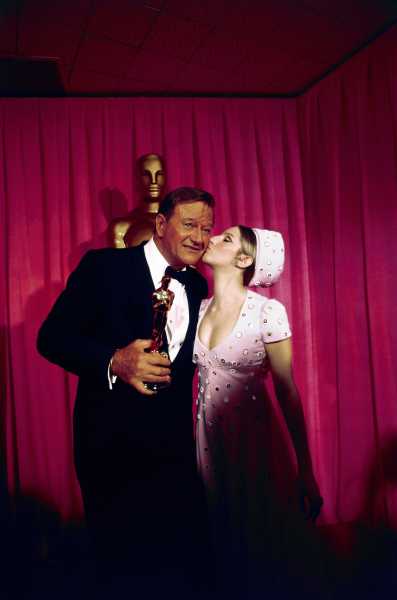
John Wayne and Barbra Streisand at the Forty-second Academy Awards, in 1970.Photograph from Bettmann / Getty
The counterculture had won. “ ‘Midnight Cowboy’ was a total ‘fuck you’ to every way that the town was doing business,” Paramount’s Peter Bart said. “An X picture was acceptable by the Academy. Would that mean that we all should get into the porn business? It was a serious discussion inside closed doors.”
At the end of the night, Bob Hope delivered a farewell that was more like an elegy, or perhaps a white flag of surrender:
Never again will Hollywood be accused of showing a lollipop world. Perhaps by showing the nitty-gritty, by giving the world a glimpse of the element of violence and its destructive effect, it will help cool it. Whatever violence the screen has shown is not an example to follow but to see in its full destructive power. The troubled, kooky characters that people the screens are not examples to emulate but to learn from and try to understand and hopefully, perhaps, contrive help for. More and more films have explored the broad spectrum of human experience. They have fearlessly, and for the most part with excellent taste, examined behavior long considered taboo.
Elizabeth Taylor and Richard Burton hosted a losers’ after-party at the Beverly Hills Hotel, where Taylor gave one of her diamonds to Gould and Rupert Crosse—the first Black actor nominated for Best Supporting Actor, for “The Reivers”—and let them toss it around like a ball. “It was the size of the Statue of Liberty,” Gould told me. If there was a baton to be passed, this was it.
Hollywood’s warring generations scraped uneasily into the night. John Wayne, Oscar in hand, caught up on his drinking at the Polo Lounge. At one point, his “True Grit” co-star Dennis Hopper approached. Hopper recalled, “He took one look at me and called me a Communist. Then he asked me to come out on his yacht—it’s actually a minesweeper—and he’d explain to me why he’s worth a million per picture.” At the Governors Ball, the official Academy after-party, Frances Bergen expressed her and Edgar’s disapproval of their daughter Candy’s psychedelic smock. “She didn’t have to agree to be a presenter,” Mrs. Bergen huffed. “But, once she did, she should have conformed and worn something elegant.”
Four days after the Oscars, the Academy announced that it had “revised and democratized” its rolls by reclassifying three hundred and thirty-five of its members as non-voting “associates.” As one headline put it, “Stodgy Old Oscar Gets a Facelift.” Ironically, many in the same voting body that had just awarded “Midnight Cowboy” Best Picture were being told that they were obsolete.
Peck set up a committee to review grievances, which poured in. There was the “distressed” former M-G-M producer who did “not understand what is to be gained by tossing others to the crocodiles.” (He was reinstated.) There was the producer of “Bud Abbott and Lou Costello in Hollywood,” who blasted the Academy’s “prejudice or favoritism.” (His appeal was denied.)
Peck wrote gracious but firm replies, took phone calls, had meetings. After the flurry of complaints, the Academy reversed only thirteen decisions. In “To Kill a Mockingbird,” Atticus Finch exemplifies the idea of courage as taking an unpopular stand. The Peck purge of 1970 may or may not have been courageous, but it was definitely unpopular. And by putting the survivors of Hollywood’s golden age out to pasture, Peck was hastening the demise of the Hollywood that had created him, the only one in which he made sense.
Nearly half a century later, the Academy took similar measures after the #OscarsSoWhite outcry, bringing in hundreds of diverse new members, including Idris Elba, America Ferrera, and Ice Cube, while demoting inactive members to non-voting “emeritus status.” Responding to blowback from old-timers that echoed the angry letters sent to Peck, the Academy’s first Black president, Cheryl Boone Isaacs, pointed to the Peck purge as a precedent. “In the ’60s and ’70s it was about recruiting younger members to stay vital and relevant,” she wrote to the membership. “In 2016, the mandate is inclusion in all of its facets: gender, race, ethnicity, and sexual orientation.”
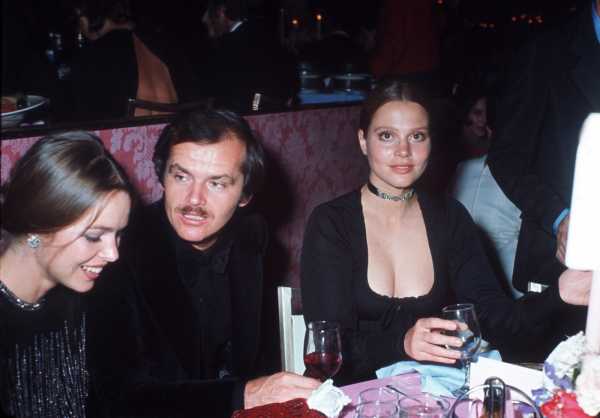
Michelle Phillips, Jack Nicholson, and Leigh Taylor Young at the Forty-third Academy Awards, in 1971.Photograph from Michael Ochs Archives / Getty
Candice Bergen had finally found a role that excited her, in Mike Nichols’s “Carnal Knowledge,” opposite Nicholson. From her bedroom at the Aviary, she could spy with her telescope on the house across the canyon, where girls sunbathed topless around the pool. Bert Schneider, a producer of “Easy Rider,” had just moved in. He intrigued her, as did his pedigree: a child of Old Hollywood who had helped forge the New, just like her. They had met in passing, first at a première and then at the Columbia canteen.
Schneider was becoming less interested in making movies and more interested in revolutionary politics. In one heady weekend, he introduced Bergen to Joan Baez, the guru Baba Ram Dass, and Huey Newton, the Black Panthers’ “minister of defense.” Her parents were even more appalled by her new boyfriend than they had been by Terry Melcher. When Schneider implored Mrs. Bergen to “go with the flow,” she snapped, “No.”
Schneider isolated Bergen from her old friends. The couple housed Abbie Hoffman when he was on the run, and they hosted Hopper when he was in from Taos, zonked. In Washington, D.C., they joined an antiwar demonstration, lying down in the Senate chamber and getting arrested. By 1972, Bergen was crossing the country campaigning for George McGovern while her father stumped for Nixon, baffled that she would throw away her inheritance on some socialist tax rate.
That same year, Schneider arranged for Charlie Chaplin to return to America with his wife Oona to receive an honorary Oscar—his first time in the country since he had been effectively exiled during the Red Scare two decades earlier. Bergen photographed the honoree for the cover of Life, and the couple accompanied the Chaplins to the Oscar ceremony, where Bergen watched Chaplin bound offstage, beaming like a schoolboy, so emotional that he misplaced his statuette.
Three years later, Schneider made his own splash on the Oscar stage when his antiwar film “Hearts and Minds” won Best Documentary Feature. “It is ironic that we are here at a time just before Vietnam is about to be liberated,” he said in his speech, then read a telegram from the Vietcong expressing “greetings of friendship to all the American people.” Backstage, the appalled Bob Hope scrawled a statement on behalf of the Academy and handed it to Frank Sinatra to read onstage, disowning “any political references made on the program.”
But the days of the apolitical Oscars were over. And so were Schneider and Bergen—a casualty of Bergen’s yearning for independence and Schneider’s belief that monogamy was a “bourgeois concept.”
In June, 1970, Gregory Peck declined to run for another term as Academy president. His tenure had been transformative, even if his entreaties to the New Hollywood cohort didn’t always stick. “The Academy is only two or three years behind the critics,” he said backstage at the 1971 ceremony, adding, “I tried to get the young people involved in the Academy, but it’s impossible to reach them.” Hopper and Peter Fonda belong to the Academy, he said, “but they wouldn’t get involved.” Hopper’s Academy membership lapsed in 1972, owing to nonpayment of dues.
Peck’s next film was “Shoot Out,” another disappointing Western. Peck reflected, “It was humiliating to work in mediocre films—not that I ever felt a lowering of self-esteem, but it was embarrassing to know that people who had liked my earlier work weren’t enjoying my latest movies.” It would take five more years for New Hollywood to find a role for him, in “The Omen.”
His son Stephen returned from Vietnam the spring that “Midnight Cowboy” won. “I was pretty shut down,” Stephen said. Two of his buddies had been killed by artillery ten feet from him. His father tried to draw him out, with little success.
Soon after Stephen came home, Peck optioned a play called “The Trial of the Catonsville Nine,” about a group of activists who burned three hundred and seventy-eight draft files in the parking lot of a Maryland draft-board office and were sentenced to multi-year prison terms. He secured a quarter million dollars to film it.
The movie was praised at Cannes but did little business back home. Peck joked, “All things considered, it may have shortened the war by about fifteen minutes.” The movie didn’t win him an Oscar, but he received a different sort of honor: when Nixon’s enemies list was made public, in 1973, the name “Gregory Peck” was on it. America’s dad had finally joined the revolution. ♦
This is drawn from “Oscar Wars: A History of Hollywood in Gold, Sweat, and Tears.”
Sourse: newyorker.com






